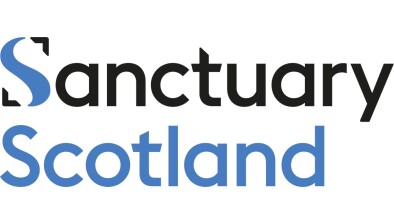Blog: Scotland’s temporary accommodation system is not fit for purpose
 Following the release of a new I-SPHERE report examining temporary accommodation provision in Scotland, Beth Watts picks out some of the key themes from the research.
Following the release of a new I-SPHERE report examining temporary accommodation provision in Scotland, Beth Watts picks out some of the key themes from the research.
This week, Scottish Government will publish a plan seeking to end homelessness in Scotland. This ambition, announced last year, saw the appointment of an Action Group which made over 70 recommendations about how Scotland might achieve that end, with a heavy focus on how to transform the country’s temporary accommodation provision to ensure it provides a positive stepping stone away from homelessness.
Around 20,000 households enter temporary accommodation every year in Scotland, with 11,000 households living in such accommodation awaiting rehousing at any one time.
Our new report explores in detail what Scotland’s current temporary accommodation system looks like in six local areas (East Ayrshire, East Lothian, Edinburgh, Dundee, Glasgow, Perth and Kinross) and how the people accommodated within it fare. It also explores what stakeholders in the homelessness sector make of the Action Group’s recommendations to focus on ‘rapidly rehousing’ those experiencing homelessness and raising standards in temporary accommodation. It finds that the current temporary accommodation system is not fit for purpose.
We spoke to 43 local experts and 52 people with current or recent experience of living in the three main types of temporary accommodation used in Scotland: ‘ordinary’ temporary furnished flats in the community, hostels and Bed and Breakfast accommodation.
The research clearly shows that dispersed self-contained housing is the best form of temporary accommodation because it offers people relative ‘normality’ during the time they are struggling. But there are also bad experiences even in this ‘best’ kind of temporary accommodation, with people sometimes allocated flats that were profoundly unsuitable for them. We met families where parents and children, or siblings, were having to share not just rooms but even beds, and where people were sleeping on sofas due to lack of space. We also met families whose accommodation was so unsuitable given enduring health issues (e.g. because access was only via several flights of stairs) that they had had to leave work and were isolated in the accommodation. Other people reported being accommodated far away from friends, family, services that they use regularly and schools, all of which came with negative impacts on their levels of stress and wellbeing.
Bed and Breakfast accommodation is the worst form of temporary provision, because people often lack access to even basic facilities and to the support they need. The study also shines a light on the sometimes very challenging environments people face in poorer quality hostels, though some hostel provision is of a much higher quality and offers people access to appropriate support.
In both B&B and hostel environments people’s autonomy and wellbeing can be severely constrained by the rules they are subject to, and the challenges of living in a congregate environment with other people, many of whom are struggling with support needs too. Often people cannot choose when and what they eat, when they do their laundry, how warm or cool their room is, whether and when they have visitors, and when they come back in at night. We met several men staying in hostel who were unable to spend quality time with their children because of where they were staying.
The research also reveals the enormously high weekly charges that people in the temporary accommodation can face in some areas. While in some local authorities the weekly charge for a temporary furnished flat is as low as £65 a week, in others it is over £400. Though for many this will be covered by Housing Benefit, it means people can find it extremely difficult to look for and enter work while they’re in temporary accommodation.
The study identifies radical mismatches between the accommodation and support people need and what is available. Some areas have too much access to higher support forms of accommodation, meaning that many people will be in (and paying for) supported accommodation when they only need ordinary housing without support. Other areas have too little temporary accommodation with support meaning that many people aren’t receiving the support they need. Part of the issue here is that the availability of support remains linked to the kind of accommodation available, rather than support and accommodation being provided separately and flexibly.
All of these issue are exacerbated where people stay in temporary accommodation for long periods, and in some high pressure areas average stays are almost a year long. It is not uncommon for some households to stay in temporary accommodation for several years.
These and other findings from the report strongly endorse the current Government’s efforts to transform temporary accommodation provision in Scotland and move to a ‘rapid rehousing by default’ model that focuses on minimising the need for temporary accommodation and getting people in ordinary, mainstream homes with the support they need as soon as possible.
Stakeholders we spoke to across six local areas revealed some of the barriers to that transformation agenda. Many stakeholders had concerns about the feasibility of the ambitious recommendations made by the Action Group, and in particular highlighted that to take these forward will require access to affordable housing (especially in higher demand parts of the country) and financial resources that they are not yet clear are available. They also fear that the partnerships with other agencies required to prevent and resolve homelessness are not yet strong enough to realize Government ambitions.
Rightly, Scotland continues to retain its status as a world-leader in the realms of homelessness policy in virtue of the uniquely strong rehousing entitlements owed to homeless households. But its current temporary accommodation system is far from fit from fit for purpose, sometimes acting as a damaging trap rather than a positive stepping stone. We hope this research paints the detailed picture needed to help Scottish Government and local authorities provide the emergency safety net that homeless households need before moving on to appropriate, sustainable homes.








